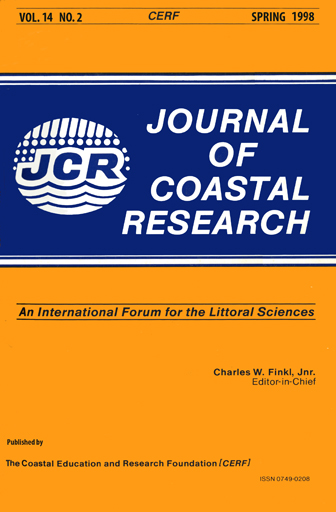Morphologic Changes of a Micro-Tidal, Low Wave Energy Beach Face During a Spring-Neap Tide Cycle, Rhone-Delta, France
Keywords:
Beach face profile, step, bermAbstract
Detailed profiles of the beach face at the micro-tidal, low wave energy shoreline of the Rhone-Delta were measured up to three times daily during one spring-neap tide cycle. Samples of sedimentary structures and quantitative data of tides, wind, waves, swash and backwash, beach groundwater levels and sediment transport were collected simultaneously. A qualitative model for morphologic changes of the beach face in the Rhone-Delta is based on these data. As the study period did not include storms, the results are only applicable to low wave energy conditions. The morphologic changes of the beach face can be schematized as an alternation of three profile types: (1) straight, (2) concave and (3) convex-concave. The straight profile develops under lower energy conditions (Hb < 0.25 m), while the convex-concave profile develops under higher energy conditions (Hb > 0.35 m). The concave profile takes an intermediate position. The influence of the micro-tidal cycle (mean range 0.21 m) on the beach face morphology is expressed by the exact position of the step and the berm crest. Slight variations of the three profile types develop under conditions of strong offshore winds resulting in eolian sediment transport towards the beach face and during high groundwater levels relative to sea-level leading to localized mid-beach face erosion caused by impermeability of this part of the beach face. Sedimentary structures were classified according to the observed morphologic zones in the beach face environment


